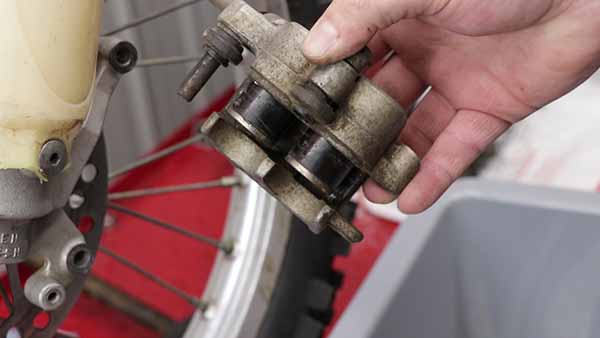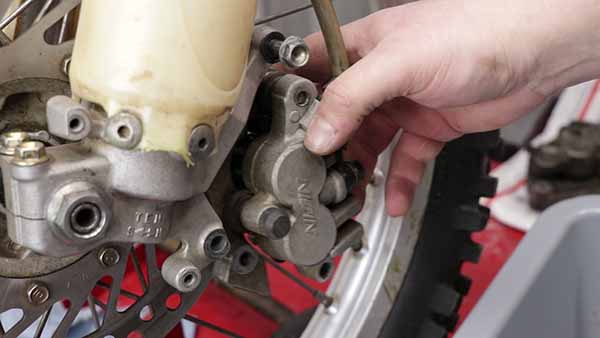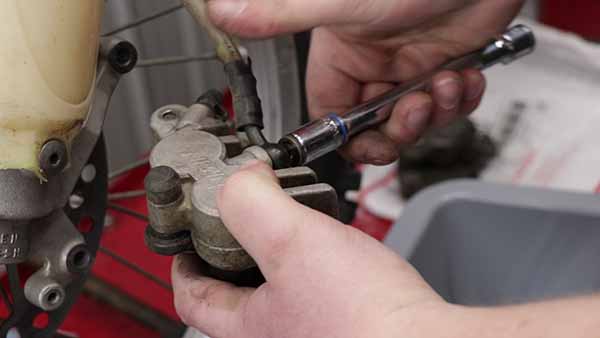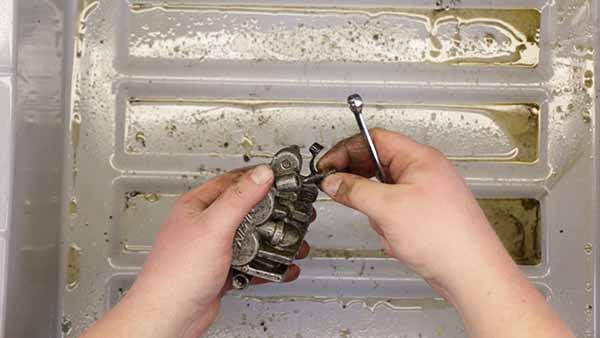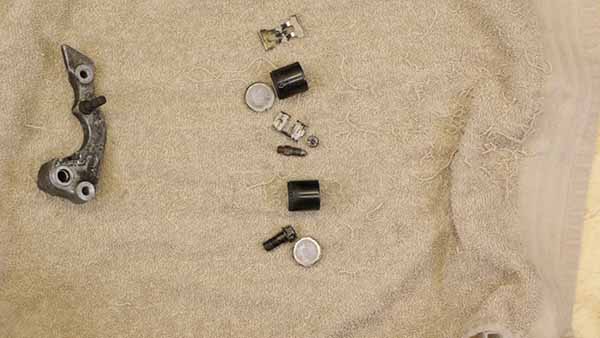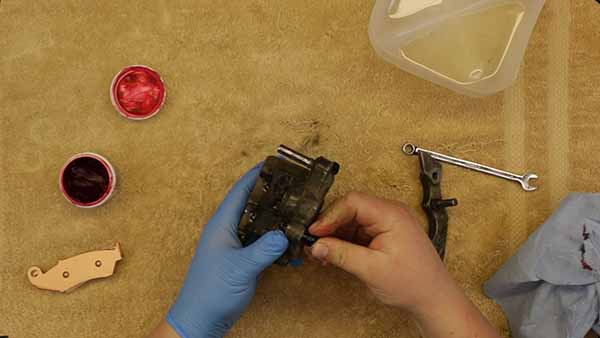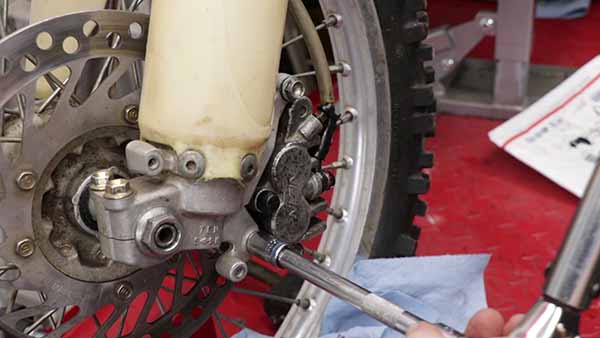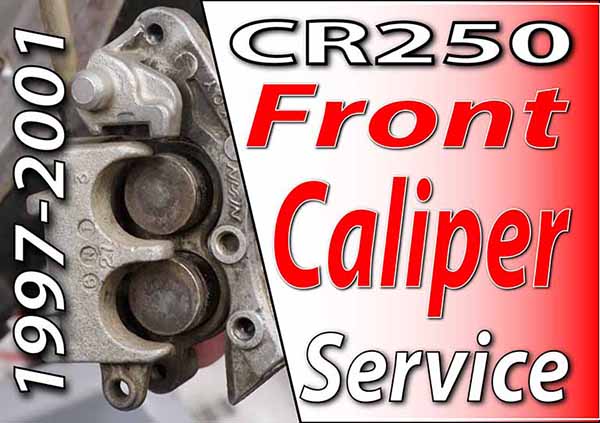
How To Service The Front Brake Caliper On Your 97-01 Honda CR250
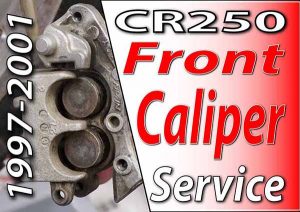 The Tools You Will Need
The Tools You Will Need
- 12mm Socket
- Torque Wrench
- 6mm Hex Wrench
- Small Pick
- A Stiff Brush
- Calipers
- Gloves
- Shop Towels
- Safety Glasses
The Parts You Will Need
- New ‘97-’01 Honda CR250 Front Caliper Rebuild Kit (Amazon)
- Brake Pads (Amazon)
- Rubber Grease
- DOT 4 Brake Fluid
This rebuild should cost no more than $25 and should take around 1 hour.
Pre-Service Notes
- I recommend opening the Service & Torque Specs in a new tab for easy reference.
- If you need parts and tools, make sure to buy them on Amazon!
- Brake fluid damages everything, so keep your towels handy!
- Pictures with captions are after the steps below.
- If you need any help don’t hesitate to ask!
Front Caliper Removal
- Remove the brake pads, but do not remove the caliper.
- If you take your caliper off the fork to pump the pistons out of the body, they may not extend evenly, and you will play whack-a-piston the whole time. So leave the caliper mounted, and use the brake disk as a backstop to make sure the pistons are pumped out evenly.
- When the Pistons have reached the brake disk, Loosen the banjo bolt while the caliper is mounted, then remove the caliper, then the banjo bolt.
- Make sure to wrap the end of your brake line with a paper towel.
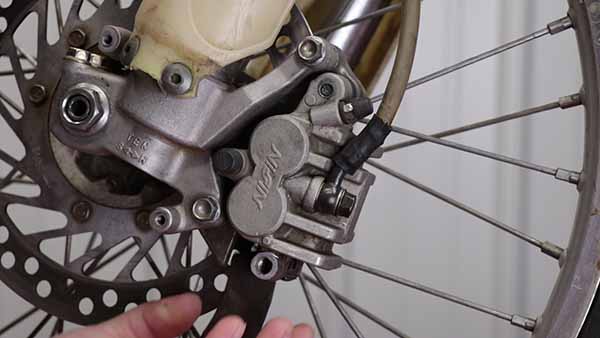
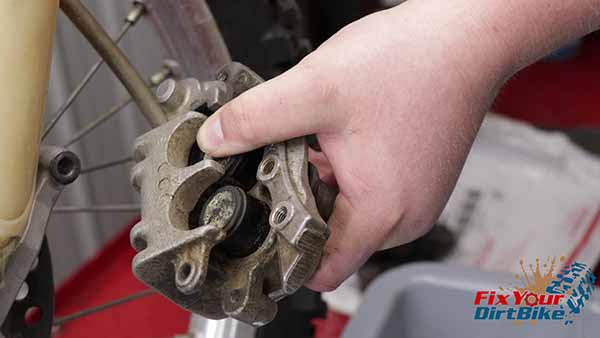
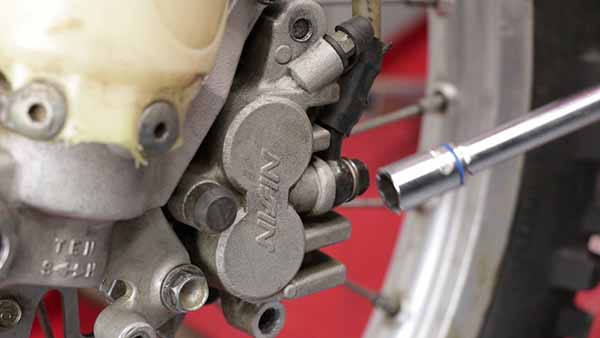
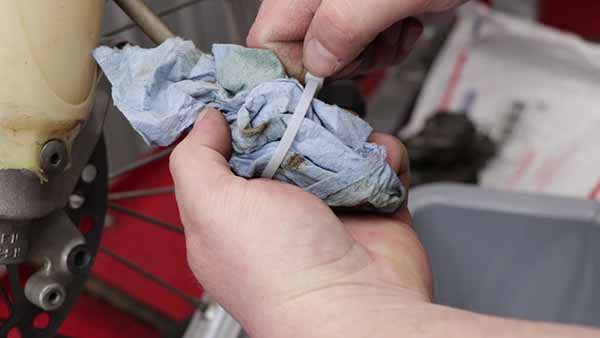
Front Caliper Disassembly
- Unlike the rear caliper, the Pistons have the openings facing in, so they usually won’t unseat themselves.
- They can be tough to remove, so if you use a pair of pliers, make sure to wrap them in electrical tape to avoid damaging the pistons.
- Remove the bleeder valve, and all the rubber components from the caliper, taking extra care when removing the piston seals.
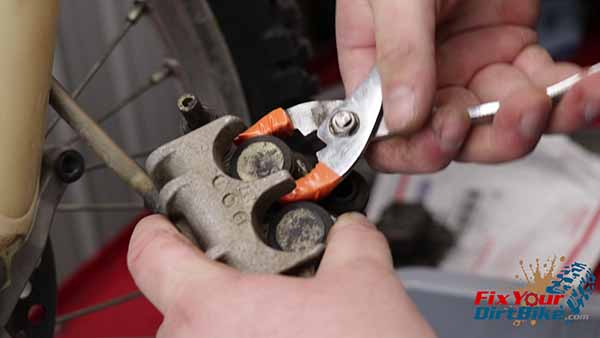
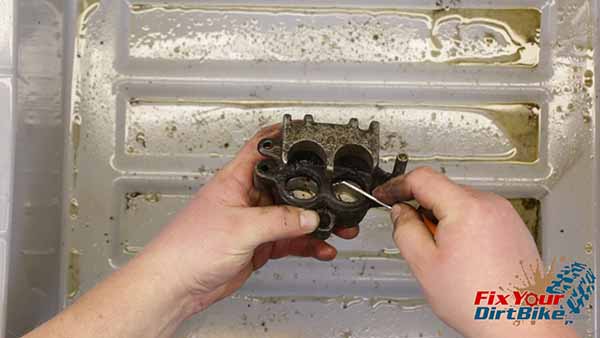
- Clean every part of the assembly with fresh brake fluid and a stiff brush.
- This caliper was extremely dirty, so I had to go at it with carb cleaner, and then a Dremel, to remove all the corrosion on the body, pins, and bore. After all that, I cleaned it again with fresh brake fluid.
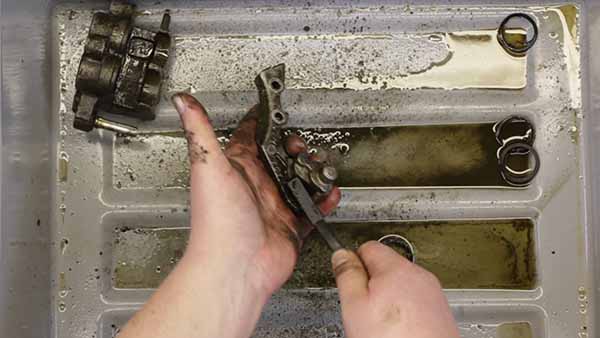
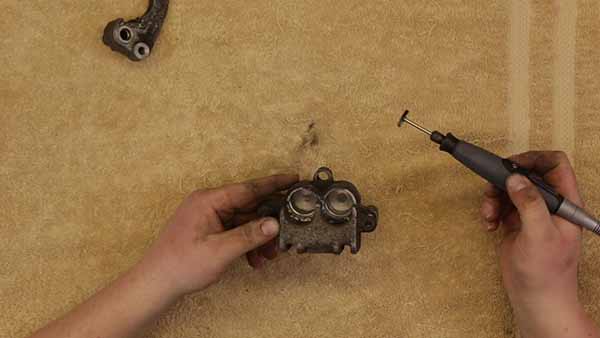
Caliper Inspection
- Measure the inside diameter of the piston bore and the outside diameter of the piston.
- The piston bore should be no Greater than 27.06mm, and the piston should be no LESS than 26.89mm on the 97-2000 model and 26.85mm on the 2001 model.
- Why the cylinder service limits changed and not the bore, is something you’d have to ask Honda.
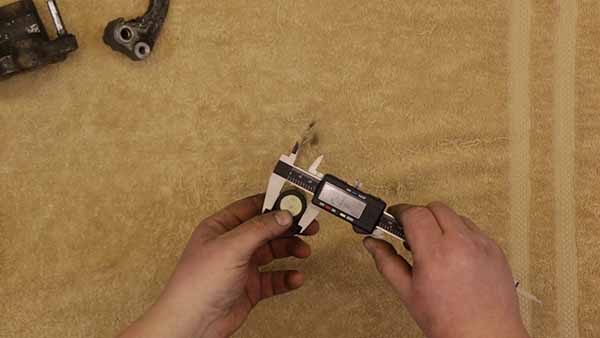
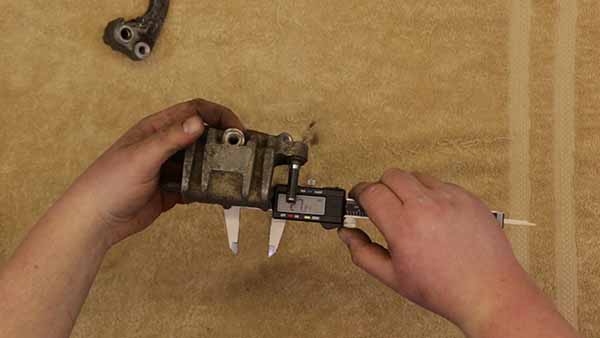
Related: How to reverse bleed your freshly rebuilt front caliper.
New Brake Parts
- Before assembly, take stock of your new parts.
- I am installing an All Balls rebuild kit that includes a new pad pin, slider boots, bleeder cap cover, banjo seal washers, and piston seals.
- Make sure to match the old parts with the new ones, so you don’t throw away something you need.
- Soak your new rubber parts in fresh brake fluid for 15 minutes before assembly.
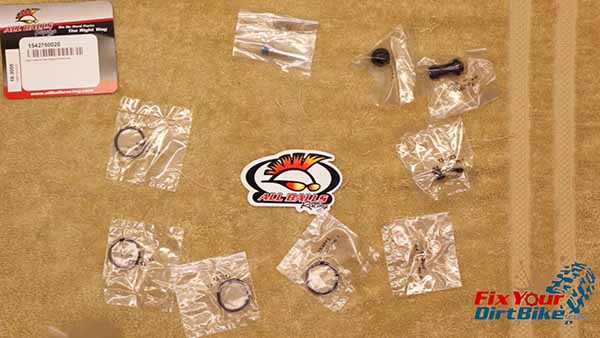
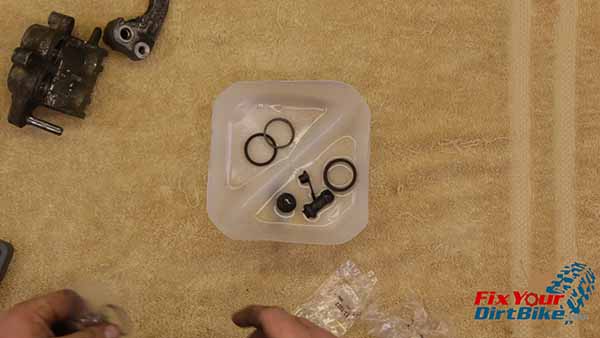
Related: How to rebuild the rear swingarm on your 97-01 CF250.
Front Caliper Assembly
- Give the caliper bore one last wipe just to be safe, then add a final coat of brake fluid for lubrication.
- Install the piston seals, immediately followed by the pistons.
- Make sure your pistons are aligned as flat as possible, then install them in a twisting motion.
- Install the bleeder valve cover, then the bleeder valve.
- Grease and install the slide pin boots.
- The short boot goes on the bracket, and the long boot goes on the body.
- Assemble the bracket and body, then give the bracket a few pumps to evacuate any trapped air in the boots.
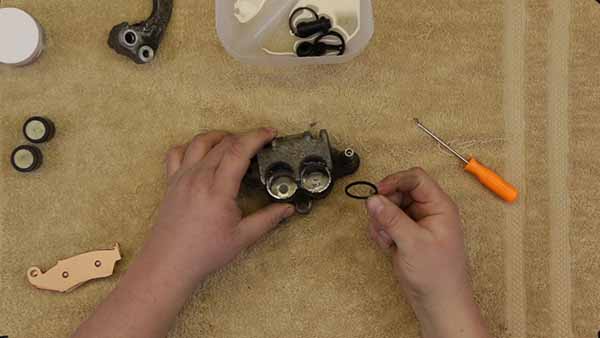
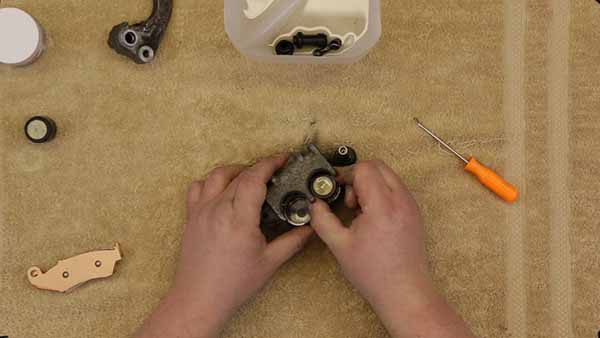
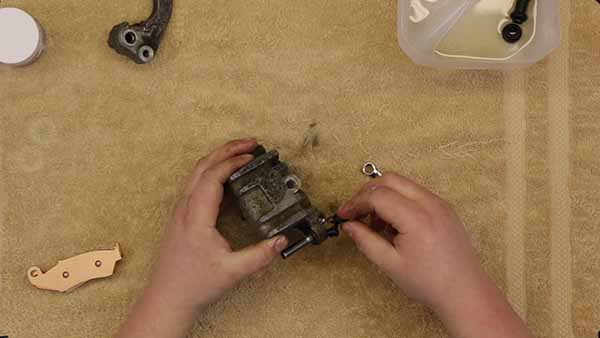
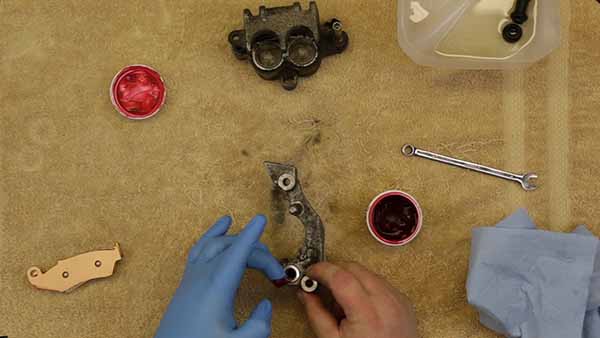
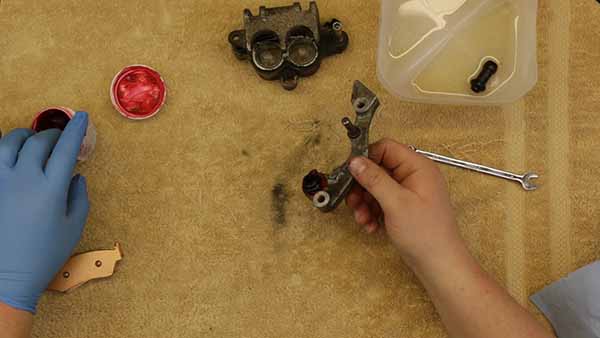
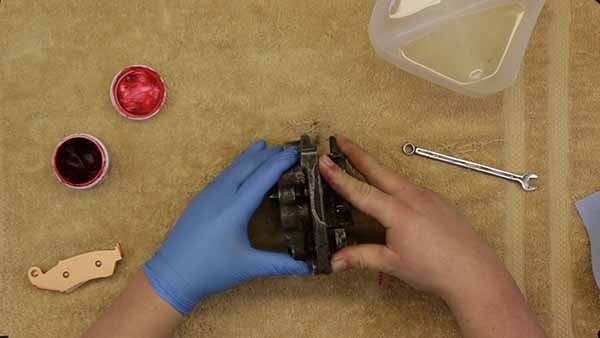
Caliper Installation
- Install your banjo bolt with the new seal washers hand tight.
- Mount the caliper, then torque the banjo bolt to 25-foot-pounds and the mounting bolts to 22-foot-pounds.
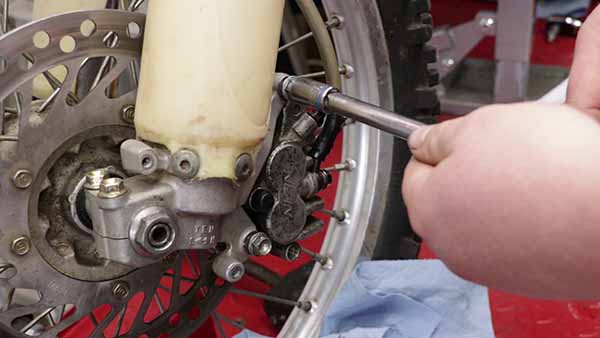
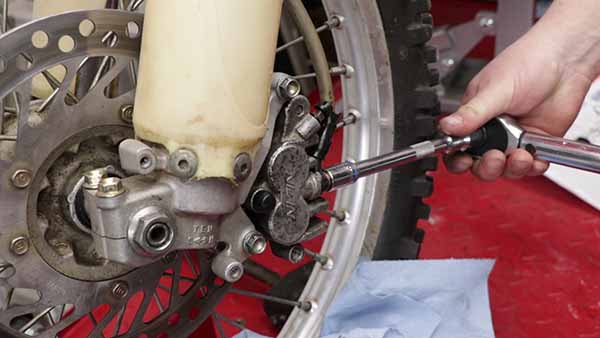
Torque Specifications
- Banjo Bolt 25 ft-lbs
- Mounting Bolts 22 ft-lbs
If you want to help take Fix Your Dirt Bike to the next level, check out my Patreon page!
If you have any questions or anything to add, please leave them in the comments or on our FaceBook page!
